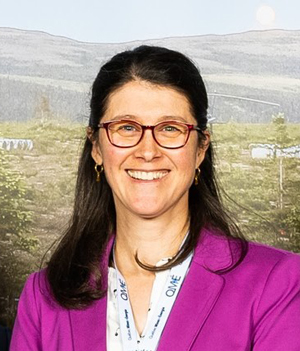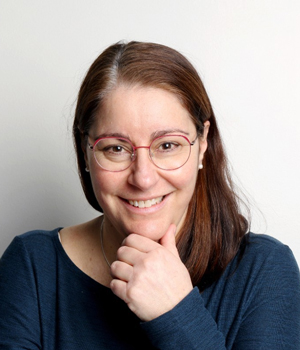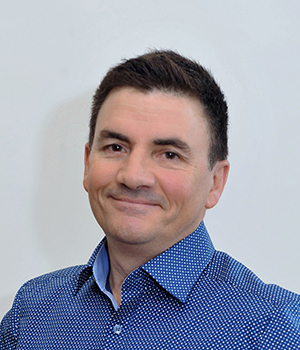This session will analyse the outcome of 10 years of the Joint Research Program on Sustainable Development of the Mining Sector (PARIDM) and present the results of five projects funded between 2019 and 2022. The aim of this program is to encourage researchers working in a variety of fields to help the mining industry meet the technical, technological and environmental challenges posed by Quebec’s geological, mining and economic context. It is offered jointly by the Ministère des Ressources naturelles et des Forêts (MRNF) and the Fonds de recherche du Québec – Nature et technologies (FRQNT).
Results – Research Program on Sustainable Development of the Mining Sector
Thursday, November 23, 2023
Room 301B - SOQUEM

Welcome address and logistics
9:05 a.m.
10 Years of Research Supported by the Mrnf and Frqnt ... And Still Counting
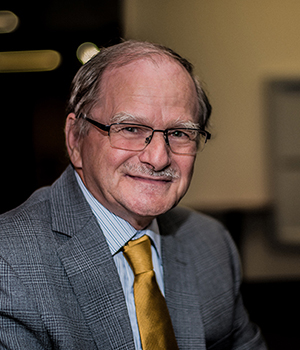
MRNF
Authors: Louis Bienvenu, Katrie Bergeron (MRNF) and Marie Vachon (FRQNT)
The objective of the Joint Research Program on Sustainable Development of the Mining Sector is to help the mining industry meet the technical, environmental and technological challenges posed by Quebec's geological and industrial context. This program is managed by the FRQNT and funded by the MRNF.
FRQNT grants are awarded on the basis of calls for proposals. For each call for proposals, FRQNT publishes a guide containing all the features of the competition and the conditions to be met by applicants. A Relevance Committee and a Scientific Committee analyze the selected applications. Applications are ranked according to the results of the scientific committee, and funding recommendations are then made to the FRQNT Board of Directors.
The whole process takes around 9 months from the launch of a call for proposals to the announcement of the results. Projects lasting two or three years can then begin. At the end of the project, funded researchers must submit final reports to be analyzed by the scientific committee. All in all, it takes a maximum of 51 months (4 years and 3 months) from the launch of a call for proposals to the submission of the final report for three-year projects.
Over the 10-year period from 2013 to 2022, the program was able to fund 130 research projects from 333 applications divided into 7 research areas, covering all areas of activity in the mining sector, including critical and strategic minerals. Investments by the MRNF and FRQNT over these 10 years totalled more than $42.6 million. However, this budget was only able to fund around 43% of the applications deemed relevant.
The mining community's contribution to these projects exceeded expectations, reaching between 32% and 39% of the value of the grants, while the minimum contribution required was set at 10%.
The program has been renewed for the period 2022-2025, to allow time for 3 new calls for proposals.
All in all, between 2013 and 2025, the FRQNT should have received no fewer than 433 proposals and funded more than 182 research projects, with investments of over $83.0 million, including the participation of partners.
These investments reflect the confidence of the MRNF and FRQNT in the future of the mining industry, which is so important to Quebec.
9:20 a.m.
Real-Time Optimization of Mining Operations
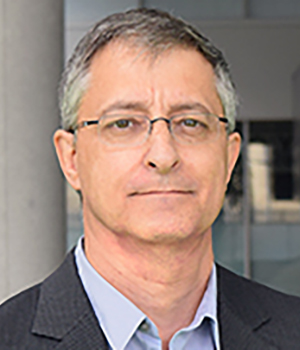
This presentation will focus on the research findings of the "Optimisation des opérations minières en temps réel ("Real-time Optimization of Mining Operations") project. First, we will briefly define key concepts of the intelligent mine, summarizing the expectations and existing reality of mines in three categories: objectives, means and the targeted business management process.
Next, we will present the research findings on the development of a robust scheduling tool for short-term and real-time mining activities. This tool first seeks to build shift schedules that take into account the operating constraints of underground mines. Given that the mining environment is highly dynamic and generates a great deal of variability in the duration of different mining operations (drilling, ore transport, rock bolting, etc.), the models developed seek to produce robust schedules that will take this variability into account, so as to avoid constant adjustments to these work schedules. These models are referred to as proactive. Tests carried out with different models demonstrate the effectiveness and robustness of schedules designed with this new approach. In order to make this tool more realistic, we will also present the work carried out on the valorization of mining data, and more specifically on the estimation of transport times, which enable us to obtain a better estimate of operating times. As mines are highly dynamic environments, the solution proposed by proactive models may be far from reality, and it is essential to modify this schedule. We then switch to a reactive model or to real-time management.
Finally, we'll outline the design of a digital twin, focusing more specifically on real-time coordination of mobile equipment in underground mines.
9:45 a.m.
Optical Recognition of Minerals and Machine Learning: Latest Developments
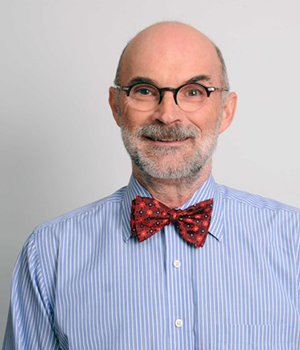
CERM-UQAC
Authors: L. Paul Bédard, Arnaud Back, Julien Maitre, Kevin Bouchard (UQAC), Cyril Kana Tepakbong and Réjean Girard (IOS Services Géoscientifiques)
Recognizing minerals is an important task in many fields, such as mineral exploration and mining, geology, civil engineering, environment, and so on. In some cases, such as the counting of grains in glacial sediments, mineral identification and counting are difficult tasks, requiring considerable material and human resources. Furthermore, in almost all cases, counting is sequential, i.e. one grain at a time; at 0.1 seconds each, counting one million grains would therefore take 27.8 hours! An approach that analyzes all the grains at the same time would therefore be much faster and more desirable.
As part of our work, a first algorithm was developed to recognize gold grains in real time using the unique spectrum of gold in reflected light. However, at the time, there was no reference material to ensure the quality of the counts and calibrate the various analysis methods. To address this situation, we developed a reference sample for counting gold grains. Subsequently, we designed a more comprehensive protocol for the optical identification of a larger number of minerals. After a few unsuccessful attempts, we turned to machine learning in collaboration with a team of computer scientists from UQAC. This computational approach is divided into several stages: mineral labeling (including segmentation), feature extraction, data processing and machine learning training.Ground truth, i.e. mineral identification, was determined by X-ray fluorescence using a scanning electron microscope. As a result of this work, mineral recognition achieves an accuracy of almost 90%. It's worth noting that in the majority of publications on the subject, learning and recognition are performed using the same photomicrograph. In actual practice, however, recognition is performed using photomicrographs different from those used for learning. An exhaustive protocol has also been developed to ensure the quality of photomicrograph acquisition. This work has enabled us to develop a complete treatment sequence, from data acquisition (images), the development of reference materials essential for counting calibration, right through to a rapid identification method using automated learning.
At this stage of our work, we are defining a new method that will enable us to quantify the textural aspects of minerals and rocks (roundness, grain proximity, mineral relationships, etc.).
10:10 a.m.
Break
Mg-rich mine tailings react spontaneously with atmospheric CO2 to form hydrated magnesium carbonates through exothermic reactions. The atmospheric carbon mineralization process has been studied in laboratory and field experiments over a wide range of time (10^2 to 10^8 s) and mass (1 to 10^8 g). These experiments demonstrate that brucite and chrysotile are the 2 most reactive common minerals for carbon mineralization. Water saturation and tailings watering frequency are crucial to optimize the reaction. Adjusting solution composition to promote Mg dissolution, while avoiding passivation of reaction sites and maintaining tailings permeability, is essential to ensure the progress of carbon mineralization. Field experiments demonstrate that carbon mineralization reactions are limited by the supply of atmospheric carbon to the reaction sites, enabling industrial optimizations to reduce the environmental footprint of mining operations.
10:50 a.m.
Stability of Underground Mining Excavations Through Fracture Network Modeling (DFN): Characterization, Modeling and Design

Université Laval
Authors: Martin Grenon, Efstratios Karampinos, Christopher Durham, Antoine Caron and Hassan Hamze (Université Laval)
Surface and shallow mining deposits are becoming increasingly rare in the northern regions of Quebec. As a result, mining operations in Quebec are being carried out under increasingly difficult geomechanical conditions (deep mines, arctic mines, etc.), thereby increasing the risks associated with the safety and profitability of these activities.
To adequately analyze the stability of excavations and mining structures (drifts, slopes, workings, pillars), it is therefore imperative to properly characterize and model the structural regime in order to better understand the potential for structural instability, reinforcement needs and the impact of arctic conditions (particularly permafrost zones) on mining structures.
The overall aim of this research project was to holistically integrate the structural regime, the most critical factor in understanding rock mass behavior in Arctic mining environments, into stability analyses of mining structures. This was to be achieved by developing our theoretical and practical knowledge in the field, working closely with the mining industry and, ultimately, by training the highly qualified personnel required by the industry.
This work has enabled us to develop a methodology for characterizing the structural regime in the context of an active arctic mine, using both fixed and mobile Lidar. Lidar approaches enable the acquisition of data required for structural analysis. The impact of this characterization method on the properties of modeled discrete fracture networks (DFNs) was examined. An approach was developed to characterize the mechanical behavior of frozen discontinuities. Several types of discontinuities were tested. A new computer code was developed to analyze the formation of boulders on the walls of a mining tunnel. This code integrates DFN modeling and tunnel geometries obtained directly from mine planning software. Analysis results can also be visualized using these tools. This approach was used in particular to assess the impact of drift representation on analysis results. The presence of rock bridges at the top of potentially unstable boulders was also studied. Retroanalysis of a major instability at the mine was also carried out. The integration of DFN into the 3DEC software was studied. Parametric analyses are underway to quantify the impact of permafrost conditions on block stability. This research project has improved the structural stability analysis process in the context of arctic mines.
11:15 a.m.
Valorization of Black Mass to Extract Valuable Metals (Li, Ni, Co, Mn) And Manufacture New Cathode Materials
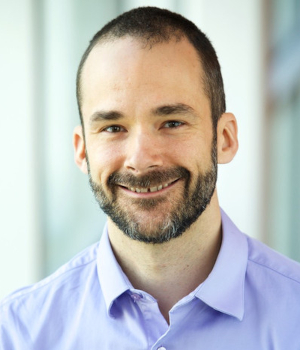
Authors: Jocelyn Veilleux, Valérie Charbonneau, David Nadeau, Maxime Goulet, Matthias Audren-Paul, Astou Diop, Gervais Soucy (Université de Sherbrooke), François Larouche and Kamyab Amouzegar (Hydro-Québec, CEETSE)
The rise of portable electronics, electromobility and renewable energy storage has greatly accelerated the demand, production and use of lithium-ion (Li-ion) batteries. These contain critical and strategic minerals (CSM) such as lithium, cobalt and nickel, whose global supply is a priority issue. At the same time, the intensive use of Li-ion batteries is leading to a significant increase in the quantity of end-of-life batteries that must be managed to limit their environmental impact. However, some CSM are found in much higher concentrations in these end-of-life batteries than in primary deposits. Therefore, the recycling of cathodes and the recovery of CSM to manufacture new cathode materials is an interesting avenue to study.
The work carried out within the framework of this project begins after the dismantling of the batteries and the mechanical treatment of the components (current collectors, anode, cathode, separator). Our raw material is called black mass. It contains oxides of the elements of interest (Ni, Co, Mn), as well as a considerable quantity of so-called primary metallic impurities (mainly Al, Cu and Fe) and secondary impurities.
To simplify the resynthesis process of cathode materials from black mass, we studied the synthesis of cathode materials precursors (pCAM) using acidic leachate from virgin materials. Synthesis routes by co-precipitation and by sol-gel were compared. In particular, we were interested in the impact of primary metallic impurities (up to 5 at%) on the synthesis of pCAMs in the form of carbonates. The pCAMs were then lithiated and oxidized to form the cathode material LiNi0.8Mn0.1Co0.1O2 (NMC 811). Physical and electrochemical analyzes were carried out to evaluate the individual and synergistic effects of the Al, Cu and Fe impurities on the cathode materials. The results show that hydroxides co-precipitate at the same pH as carbonates, which was quantified using a new thermoanalytical procedure. Furthermore, impurities affect the cationic mixture and the lattice parameters of NMC 811, but it should be possible to optimize the proportions to preserve or even improve the electrochemical properties.
